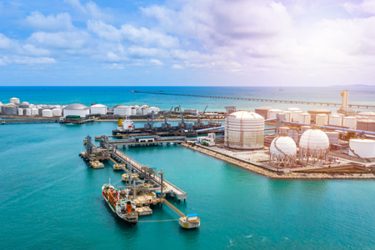9 Benefits Of IoT-Based Water-Level Monitoring
By Sanjeev Verma

With the dearth of quality source water a major and worsening issue for utilities and industry, water-level monitoring is paramount for successful operations — as is stepping up to IoT technology.
Degrading water quality, reduced water levels, water consumption patterns, and a lack of backup resources are a few challenges that water-based industries currently face, and the reckless use of water has adversely affected biodiversity and natural habitats to a point where it has become scarce across major regions. However, Internet of Things (IoT) technology provides a real-time monitoring solution for the water industry and other sectors that utilize water as their primary resource, helping to mitigate scarcity’s impact.
Traditionally, operators across industries would use scales to measure water levels and record everything manually. This posed several challenges, with the foremost being inaccurate measurement, affecting inventory levels and disturbing the entire process. IoT technology is a disruptive concept that flourishes with rapid industrial acceptance in the field of level monitoring for liquid commodities.
If you are thinking of replacing your traditional and old processing system with IoT technology, doing so would reap the following benefits:
1. Informative Insights
Installing IoT technology with your existing SCADA provides sensor-based monitoring of assets, where the sensors fetch water-level data and transmit the same on the user’s dashboard. This enables prompt decision-making, allowing managers to take necessary actions on time. It thus reduces the chances of water spillage; detects unnecessary consumption patterns, thefts, and leakages; and increases the overall efficiency of the plant processing.
2. Illustrative Historical Reports
An IoT-based solution to monitor water levels provides a well-structured and systematic approach to deal with the plant’s functioning. Managers get a simplified dashboard to optimize their everyday tasks, and can even operate them remotely if needed. It then presents the details through illustrative reports, while also keeping a historical record of each process and piece of equipment. This makes it a lot easier for managers to make decisions at a single glance and share them with the appropriate person when required.
3. Preventive Maintenance Checks
The data-driven approach of IoT technology provides scheduled preventive maintenance checks for the respective equipment and assets. It also provides a set threshold value for rising water levels to avoid unnecessary water spills, thus protecting the premises against water damage. The water-level monitoring solution is well-structured and equipped with advanced-level sensors to keep a real-time watch on water levels, eliminating the chances of asset degradation through any means. It also enables automated maintenance checks of the entire system as per the business requirements.
4. Instant Alerts
The sensor-based system retrieves data from water containers and supplies the information through advanced communication channels. All notifications are sent to the managers through an instant alarming system that triggers another alarm on the connected smart devices. This helps the industrial operators make informed decisions in case of leakages so that they can manage adequate supplies across particular regions. Industries can use this data to ensure better business productivity, improved brand recognition, and quality services.
5. Seamless Communication
One can easily simplify the data management process by installing an IoT setup with water storage containers. IoT technology provides great opportunities for businesses to scale up their progress in effective ways. A smart water-level monitoring solution helps water authorities buckle up at times of risks like floods, rising river water levels, etc. It further offers seamless integration and communication within the authorities through interconnected devices, ensuring productive inputs and informed decision-making.
6. Cost Reduction
IoT technology is currently being used in abundance across industries. Integrating it at water authorities gives a new edge to the entire processing of the water supply network. This counts for significant cost savings as the technology prompts the use of sensor devices and gateway connectivity to run maintenance schedules on time and reduce process downtime.
7. Effective ROI
IoT is the future, with many societal benefits, but it is best suited for industrial environments. It amps up the effectiveness of the plant process, resulting in better services and ROI. For instance, installing a real-time river monitoring solution will provide managers with accurate details and the status of river water levels, enabling them to make quick and informed decisions that result in effective ROI.
8. Scalable Solution
An IoT-based water-level monitoring solution is an advanced and well-equipped system highly scalable to monitor the realtime volume of water-filled tanks. It is a full-fledged solution, comprising customizable and flexible features for ease of use. The rapid acceptance of technology in the water industry is a bold step toward progress, which makes a great impact on overall productivity.
9. Multiple Alerts
Installing a scalable IoT-based system further provides real-time alerts of water-related issues like logging, diseases, etc. It allows sufficient space for managers to make informed decisions and take necessary actions. Therefore, to never miss any alert, the solution consists of multiple alarm systems, including SMS alerts, email alerts, platform alerts, etc. These alerts are presented as real-time notifications on the users’ smart devices that immediately prompt the appropriate authorities to make effective decisions regarding the river/reservoir levels.
The implementation of IoT is thus a great opportunity for water authorities and industry, providing a much-needed solution to mitigate water-related issues and offer a water supply network without any hindrances.
About The Author
 Sanjeev Verma is the founder and CEO of Biz4Group, based in Orlando, FL. He conceptualized the idea of Biz4 Brand and founded Biz4Group and Biz4Intellia. He has 20+ years of experience in boosting IT-based startups to success. In the past, he has worked in leadership positions with Marriott Vacations, Disney, Mastercard, State Farm, and Oracle. His company excels in developing, implementing, and monitoring digital solutions ranging from IoT solutions and products, mobile and web development, and digital marketing to full stack development and CMS solutions.
Sanjeev Verma is the founder and CEO of Biz4Group, based in Orlando, FL. He conceptualized the idea of Biz4 Brand and founded Biz4Group and Biz4Intellia. He has 20+ years of experience in boosting IT-based startups to success. In the past, he has worked in leadership positions with Marriott Vacations, Disney, Mastercard, State Farm, and Oracle. His company excels in developing, implementing, and monitoring digital solutions ranging from IoT solutions and products, mobile and web development, and digital marketing to full stack development and CMS solutions.
